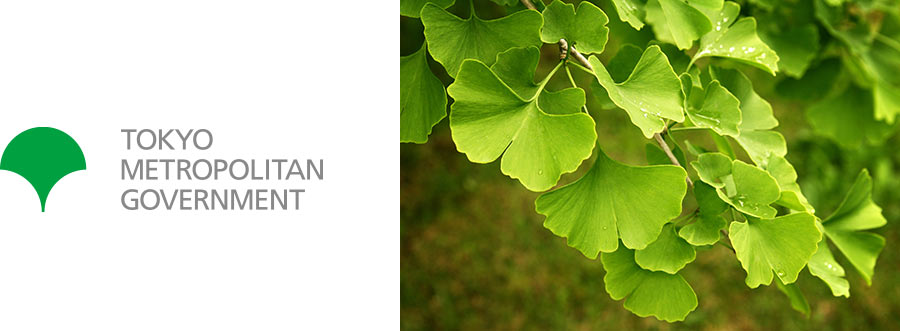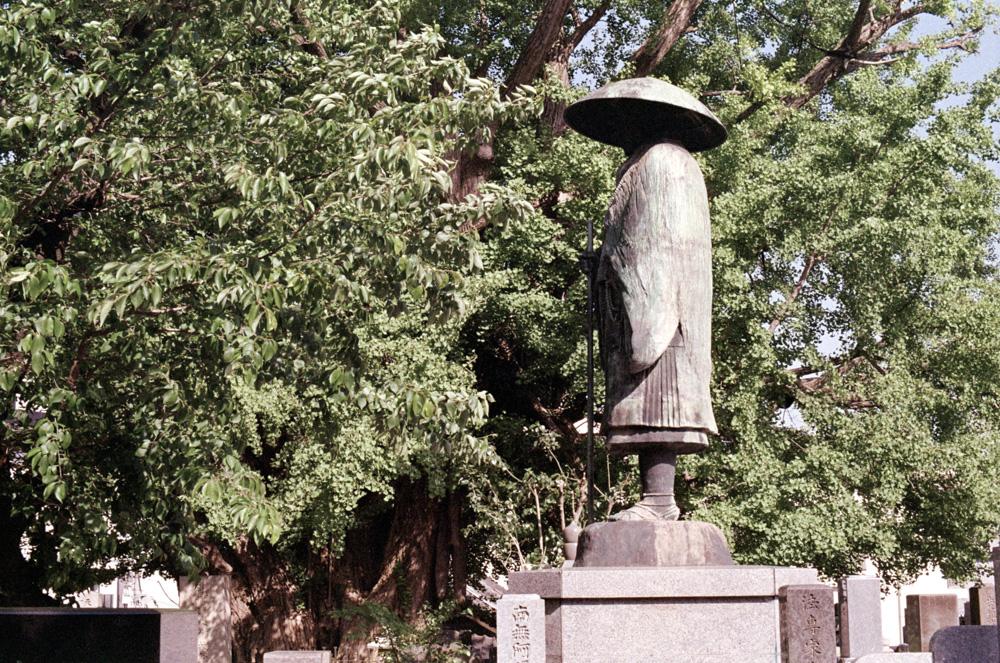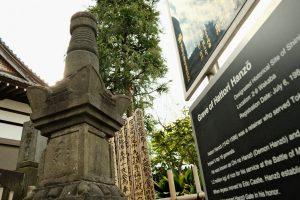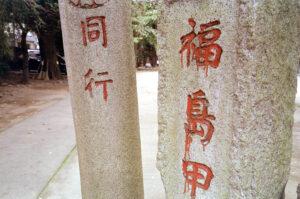The oldest living thing in Tokyo stands on the grounds of Zenpukuji Temple
Meet the resilient giant that has witnessed the transformation of Tokyo from a small fishing village to the most populous metropolis in the world.
We are about to visit the oldest living thing in Tokyo. And no, I’m not talking about one of the 80,000 centenarian people in Japan. This thing is far, far older.
To find it, we need to go to Azabu-juban, one of the most expensive neighborhoods in central Tokyo. To be precise, it’s located on the tranquil grounds of a temple called Zenpukuji — the second oldest temple in Tokyo after Sensoji in Asakusa.
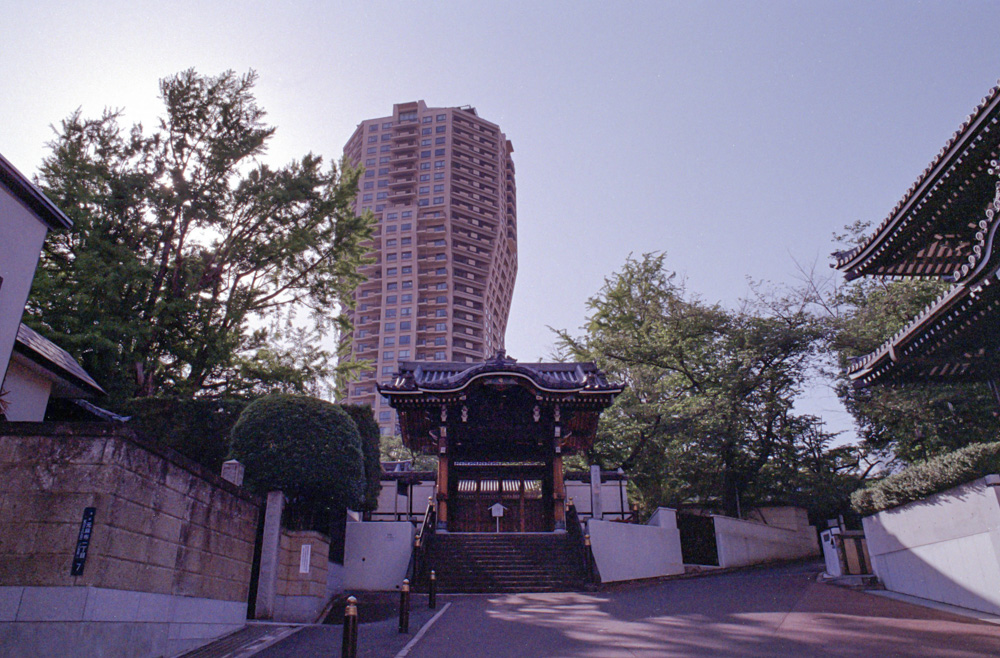
A long slope leads to the front gate of the temple (pretend to ignore the intimidating high-rise in the background).
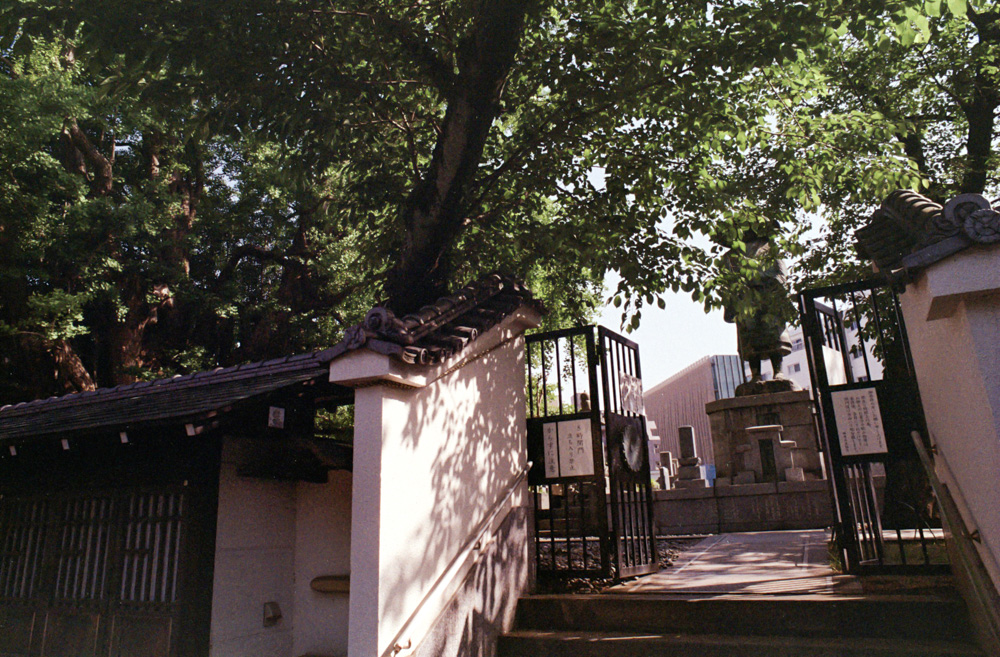
Past the gate, on our left side is a stone wall with stairs leading to the cemetery.
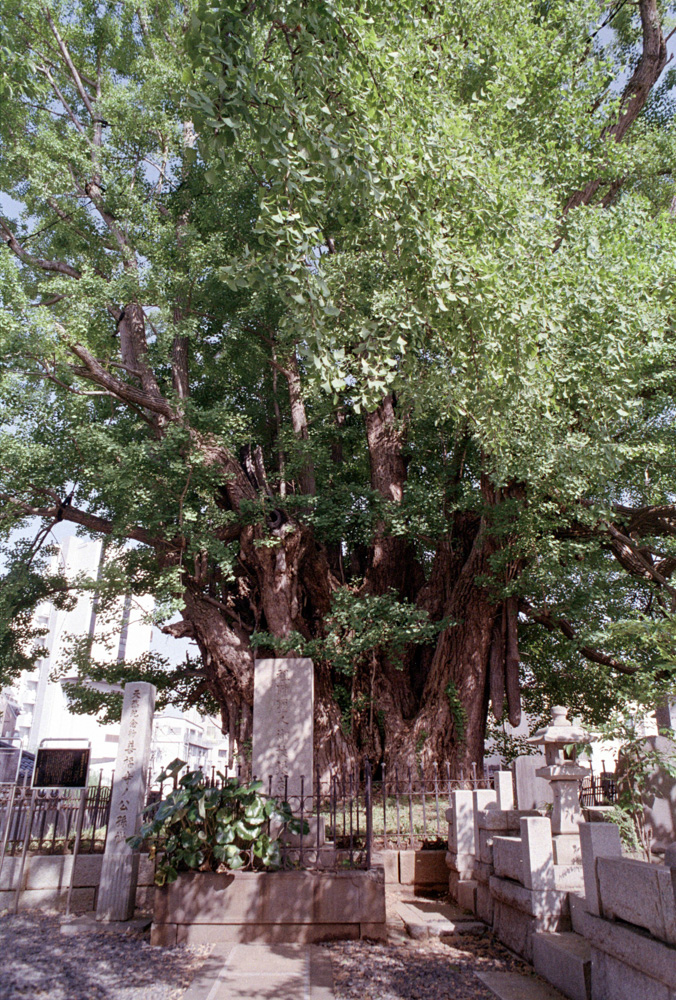
And here it is — meet the giant, ancient gingko tree of Zenpukuji.
It has been growing here at this very spot for over 780 years. Designated a natural monument of Japan, it is considered to be the oldest tree in Tokyo.
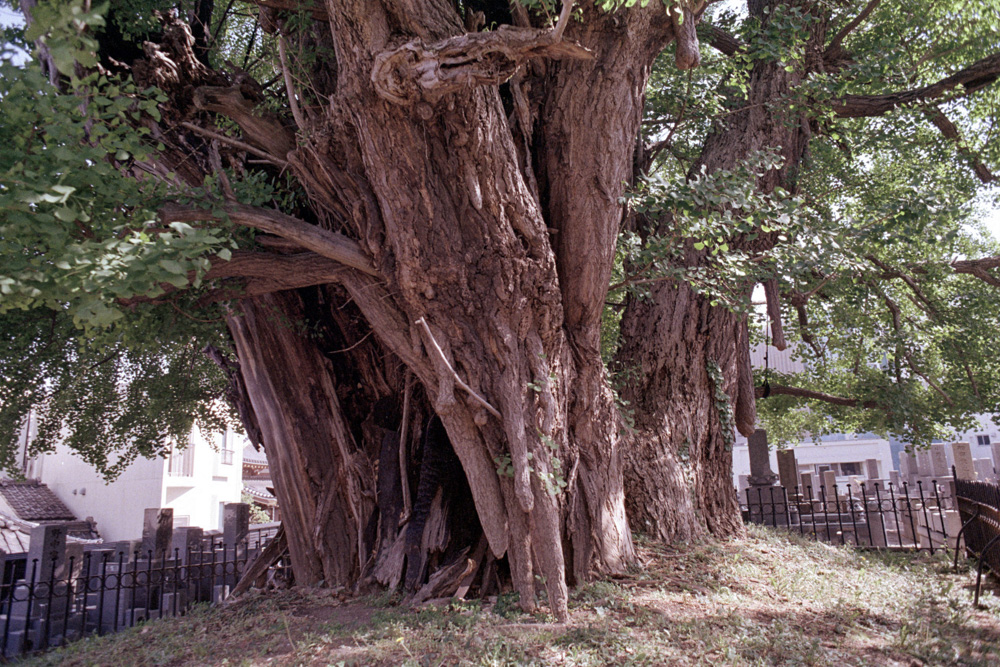
The tree reaches 20 meters in height (which is not so tall for a ginkgo) but the circumference measures a respectable 10 meters! When a fire prevention water tank was set up at Zenpukuji, they discovered that the roots of the tree reached a depth of 10 meters underground.
It’s surrounded by a fence but we can walk around to see it from all sides.
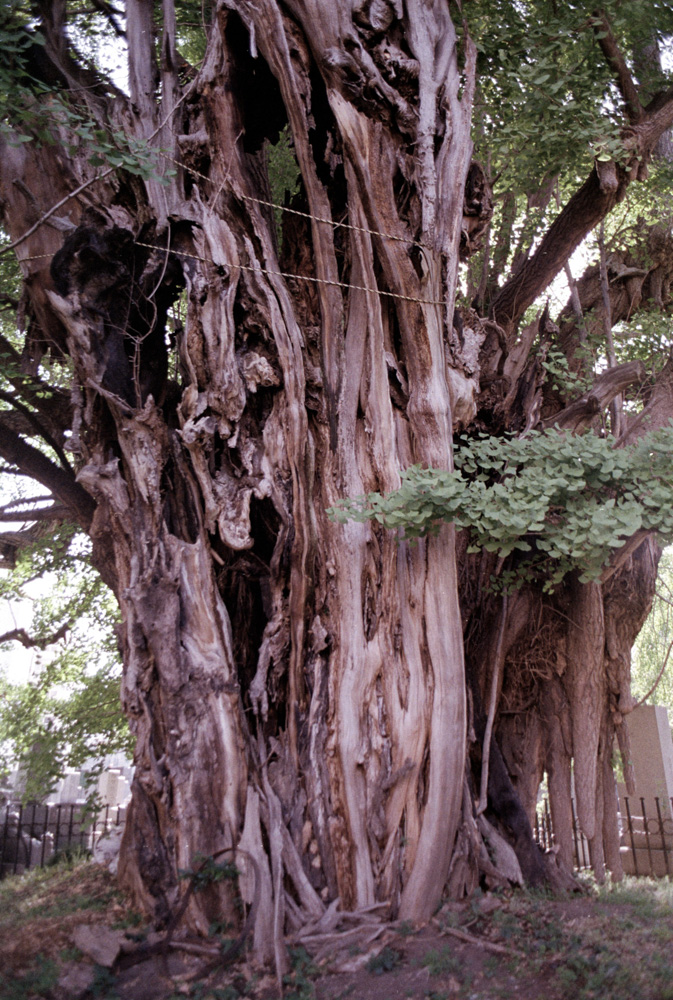
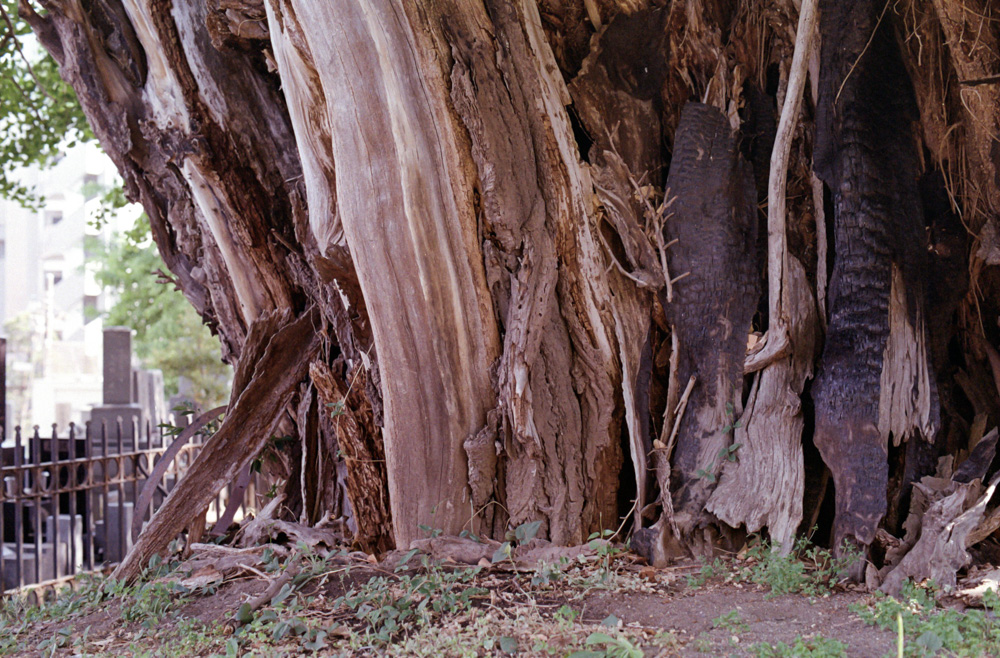
The main trunk is formed by the fusion of several trunks which break off about 4 meters from the ground. A secondary trunk formed from the main trunk, and was itself later broken off at about 12 meters from the ground. Now there are about ten additional secondary trunks being formed from the top of the trunk and the base of the tree (source). There is even bamboo sprouting from the top of the split trunk.
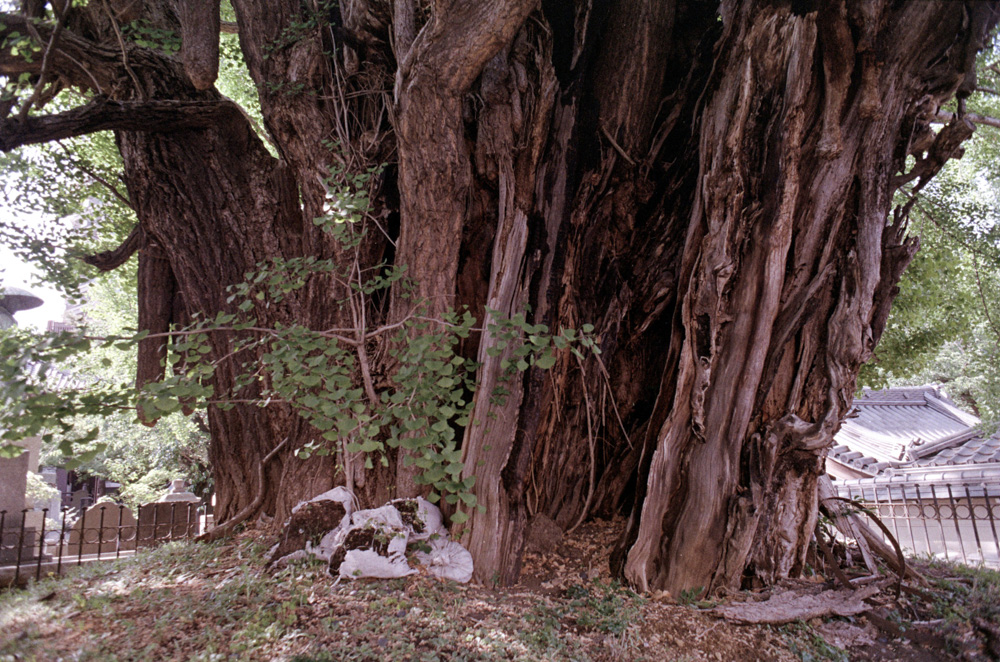
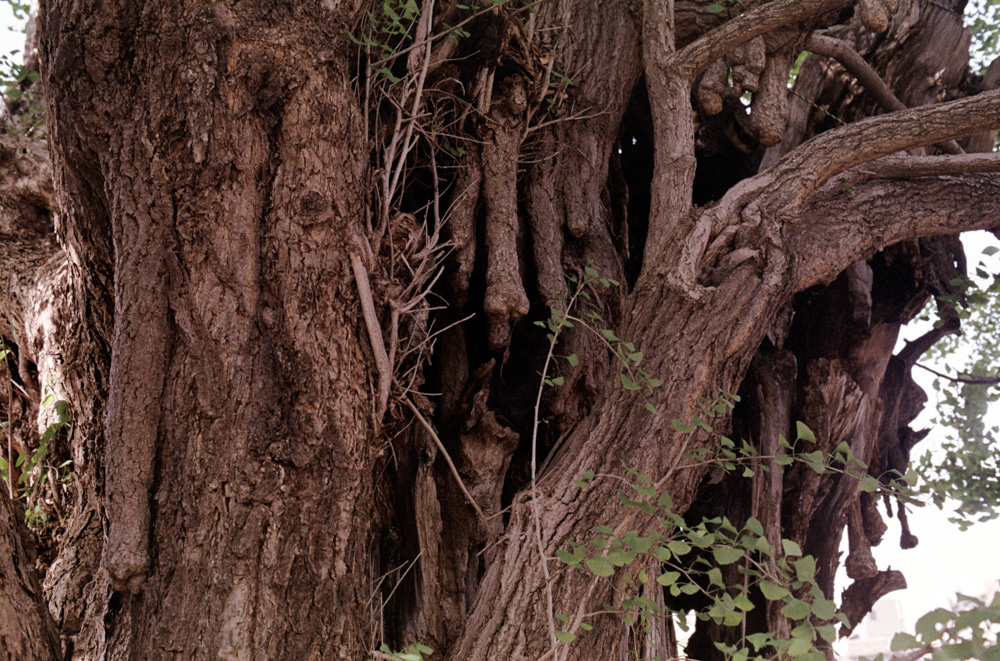
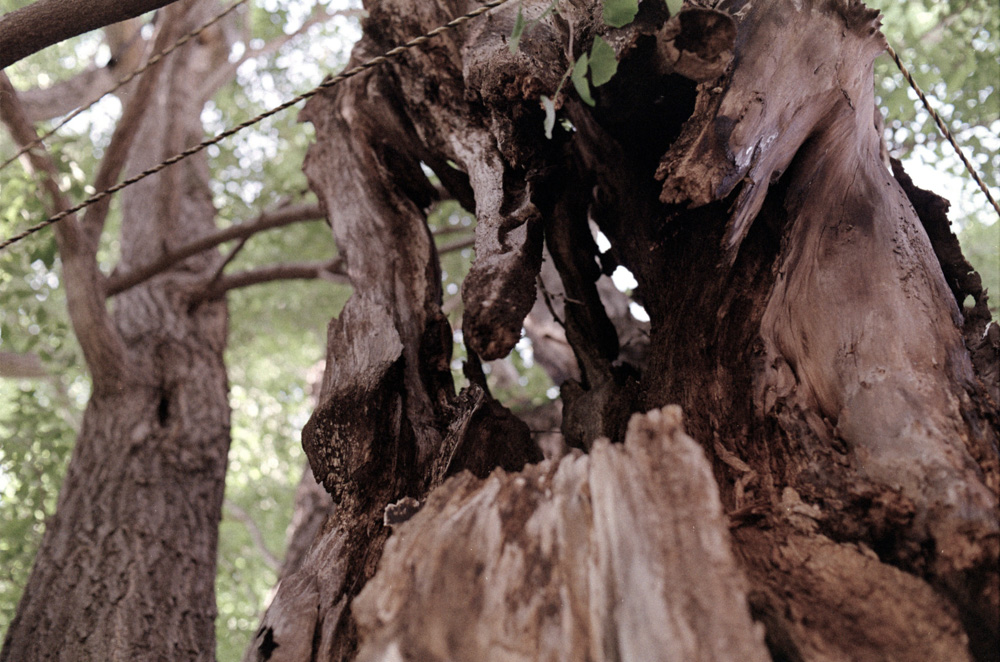
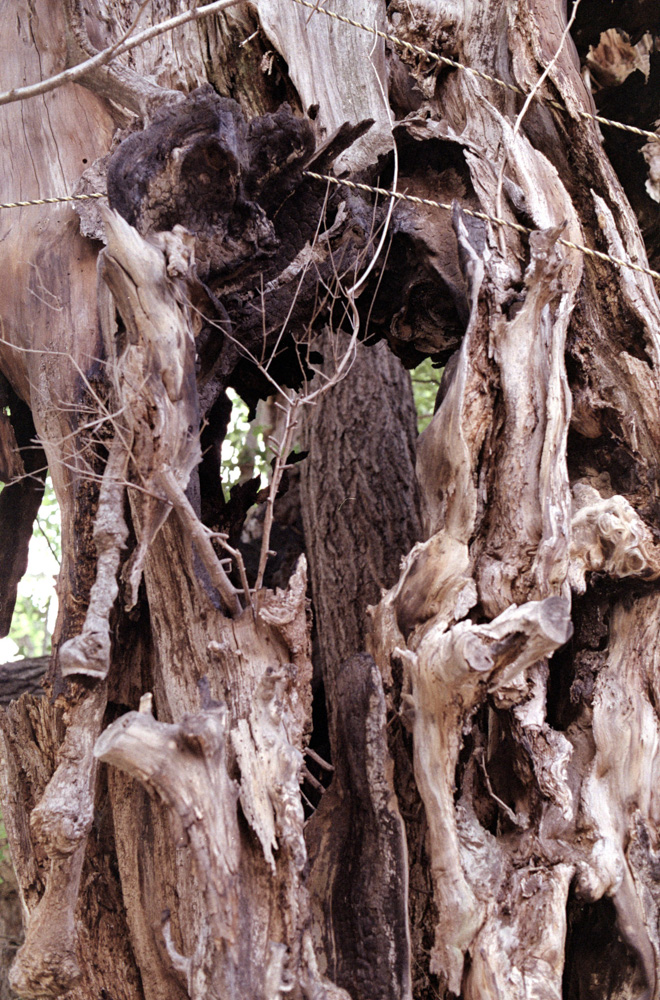
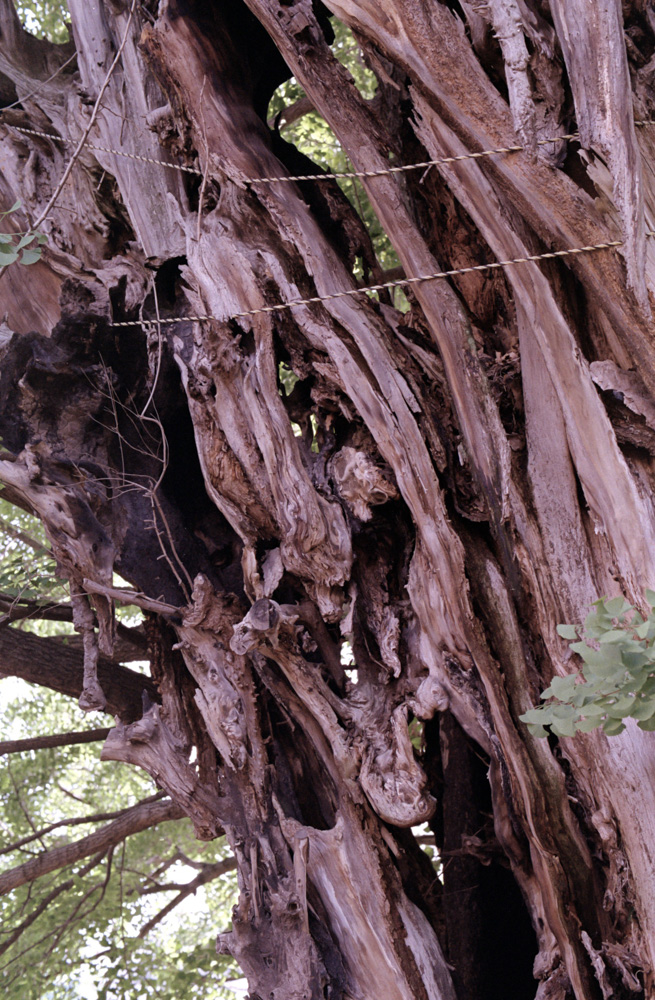
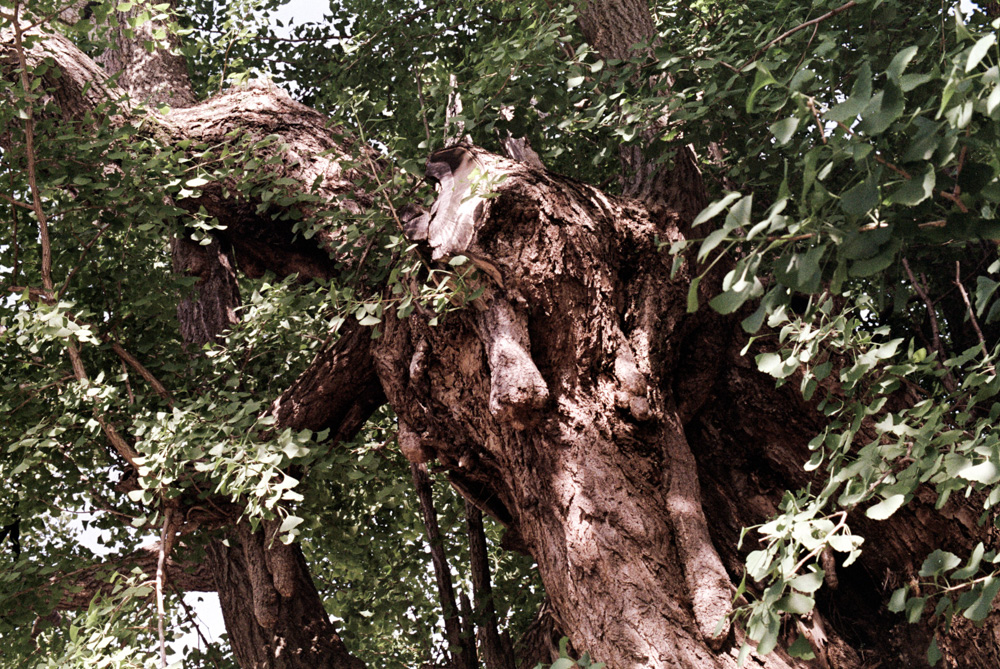
This tree is also known by the name “Upside-Down Gingko” or Sakasa Icho. This naming comes from the shape of the branches that grow downward, the so-called aerial roots. These stalactite-like branches are typical of extremely old ginkgo trees throughout Asia.
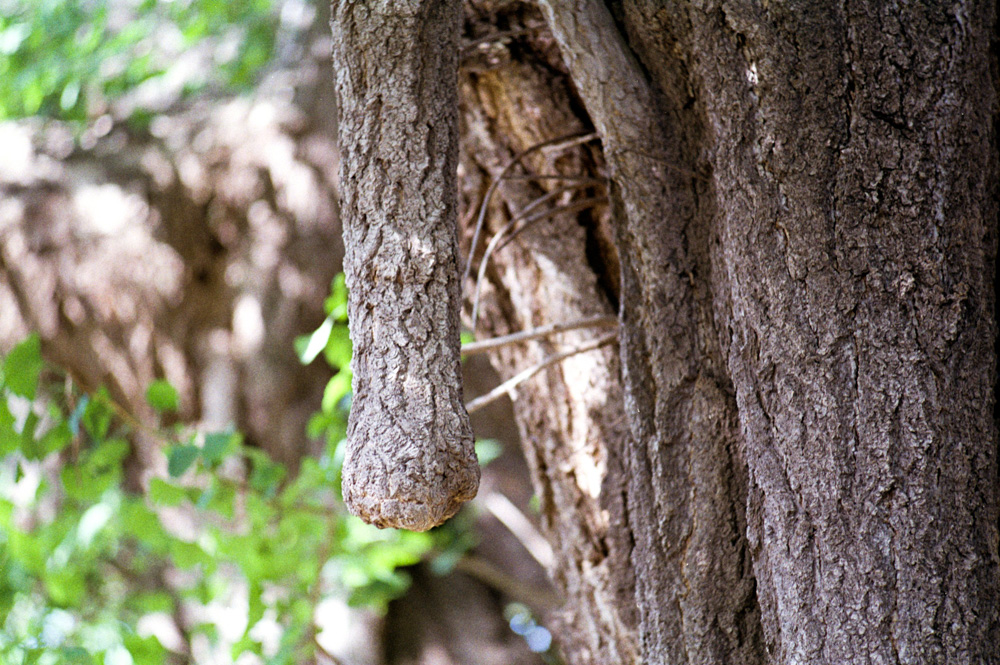
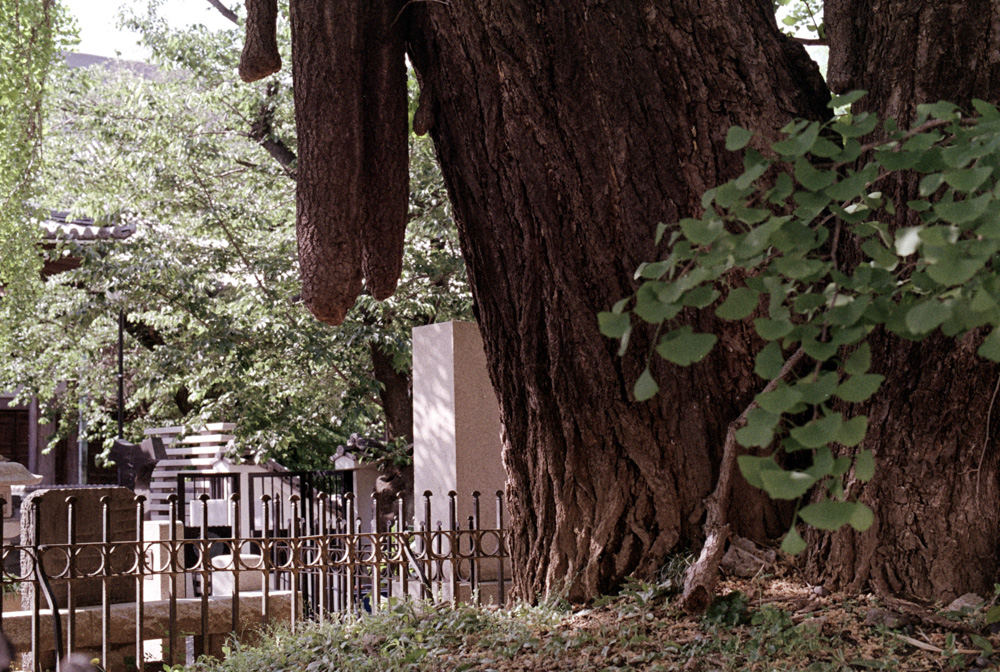
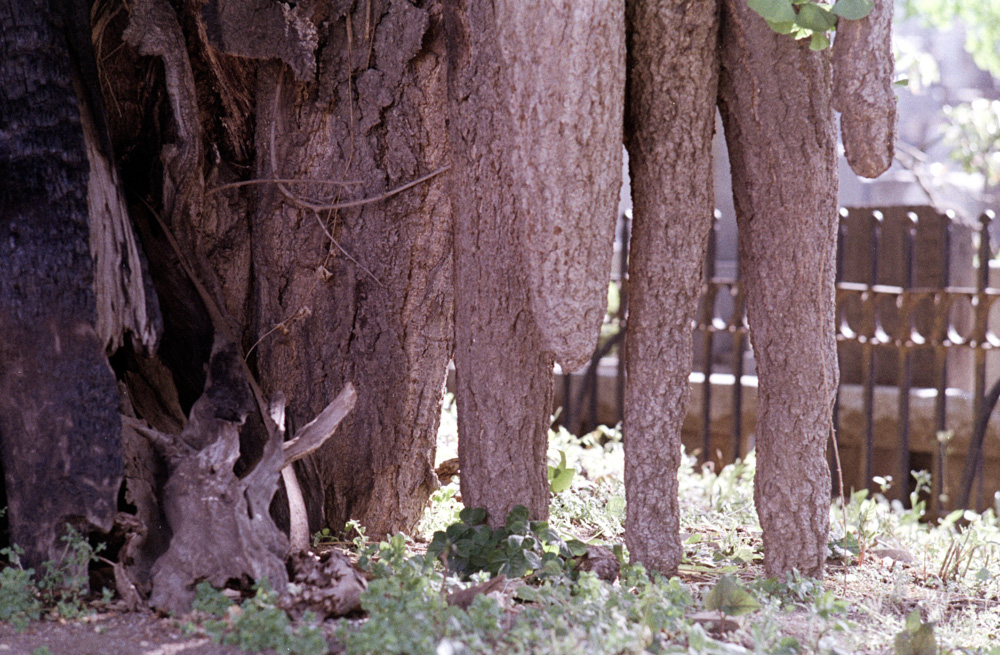
If this tree could talk, what kind of stories could it tell?
Maybe it would tell us about the pain it endured when its trunk got burned from an incendiary bomb that exploded nearby when the U.S. warplanes firebombed Tokyo in May of 1945.

Maybe it would tell us about that one day in winter when British explorer and plant collector E. H. Wilson photographed it in the early 20th century.
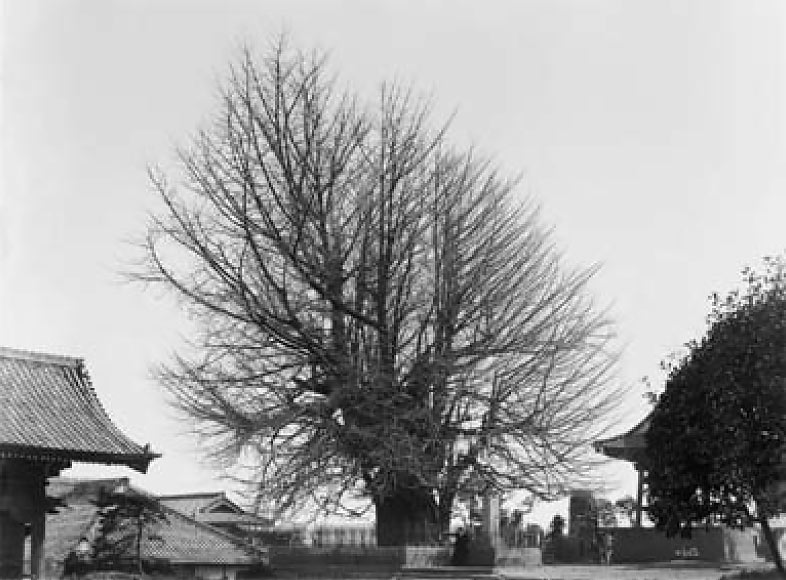
Or we could go even farther back in history and find out about the story behind this old photograph from the Edo period.
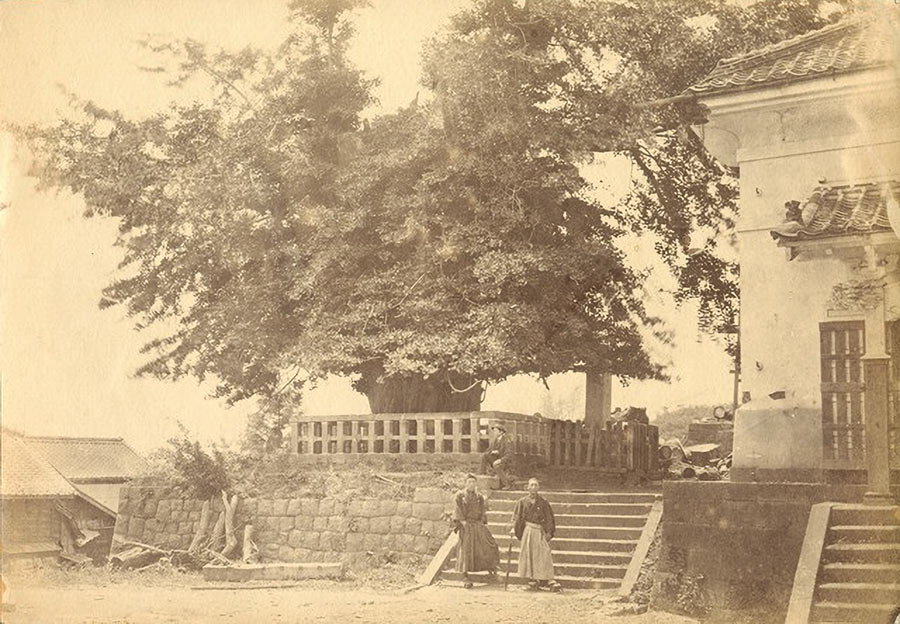
The tree could tell us about countless people who passed by it, or rested under its shade. Before photography was invented, the tree existed in illustrations, such as this woodblock print from Edo Meisho Zue (illustrated guide to famous places in Edo).
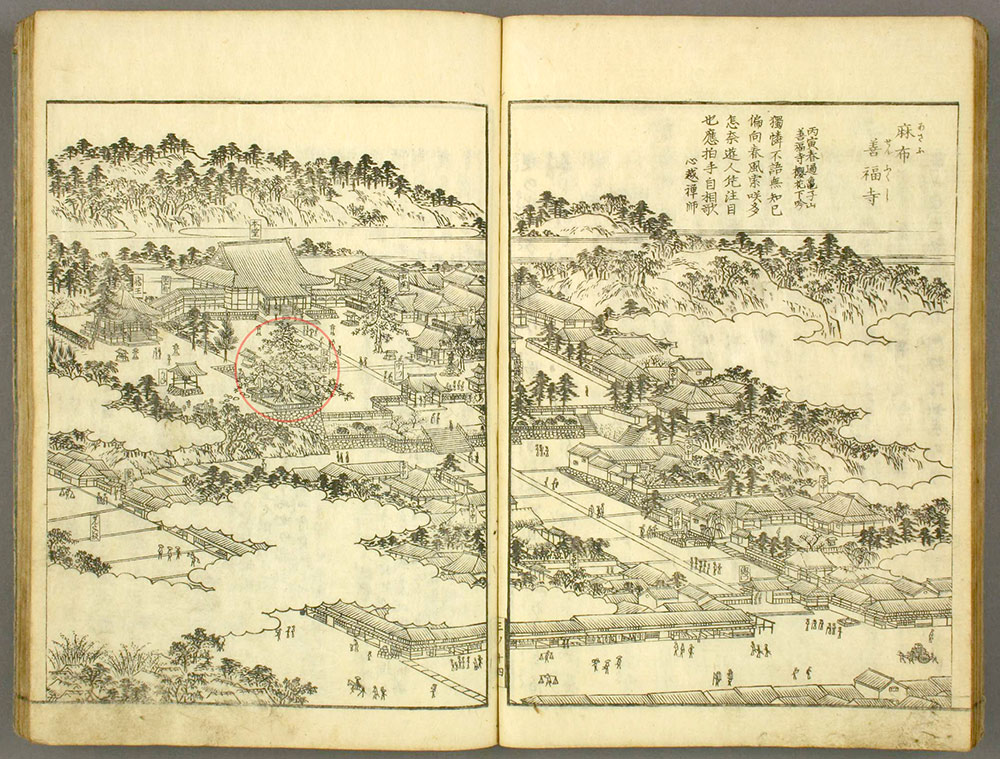
And many, many more stories of every single day over the span of seven centuries that we will never know about.
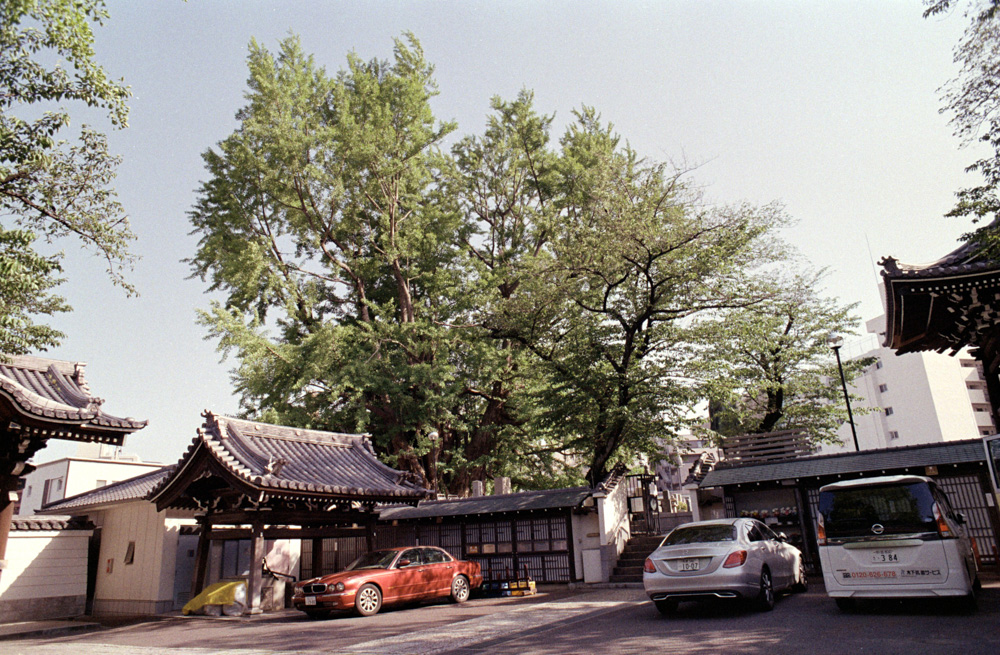
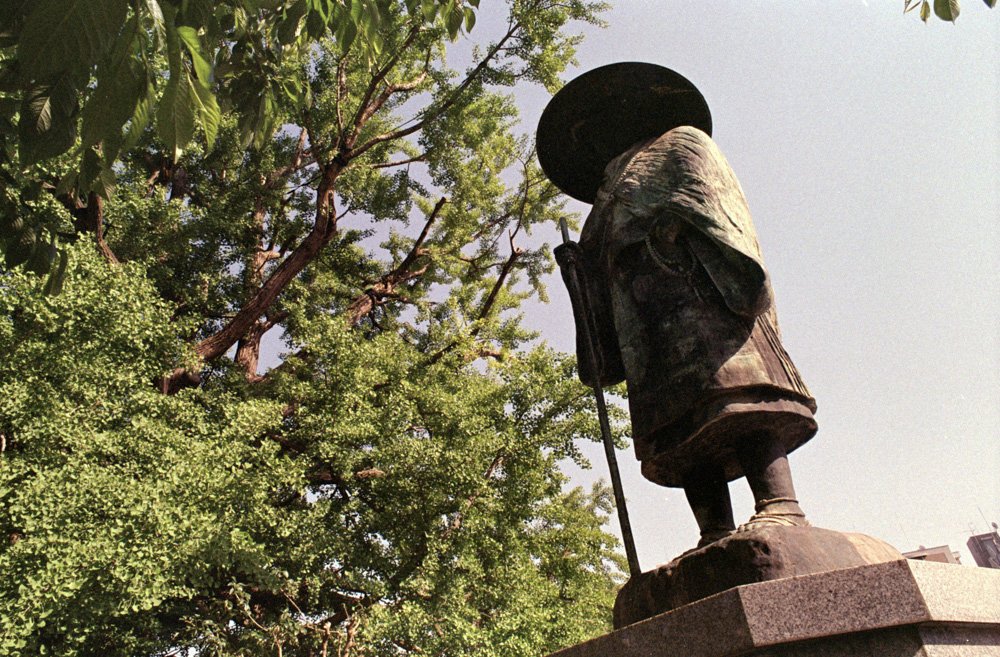
Near the tree, there is a statue of the 13th century monk Shinran, the founder of Shin Buddhism in Japan. The legend goes that in 1229, upon leaving the temple after teaching the principles of his sect, Shinran stamped his walking stick on the ground and suddenly, the stick began to sprout buds and spread branches, finally growing into this gingko tree.
The tree stands on the east corner of the cemetery and a large part of the cemetery is on a very steep hill with views of the city below.
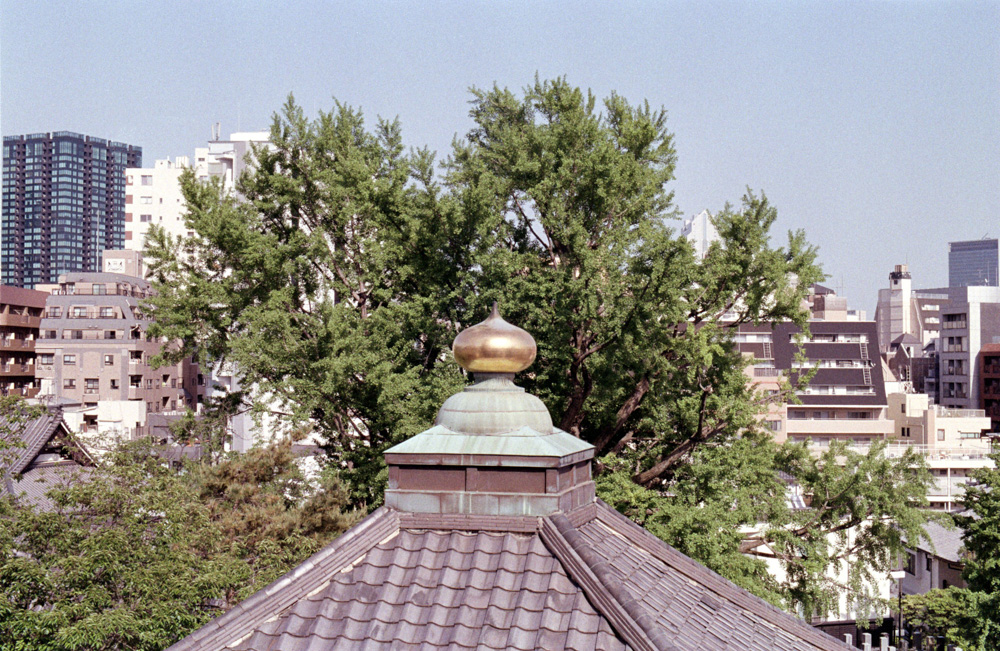
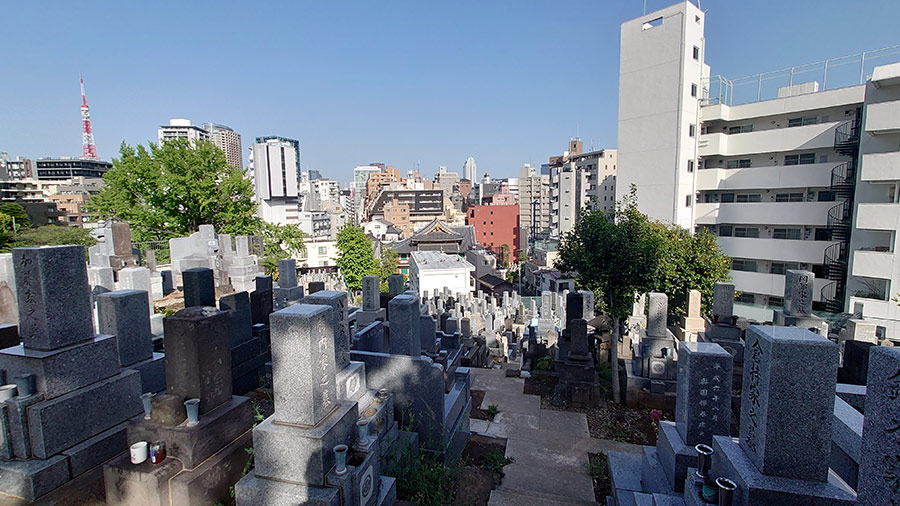
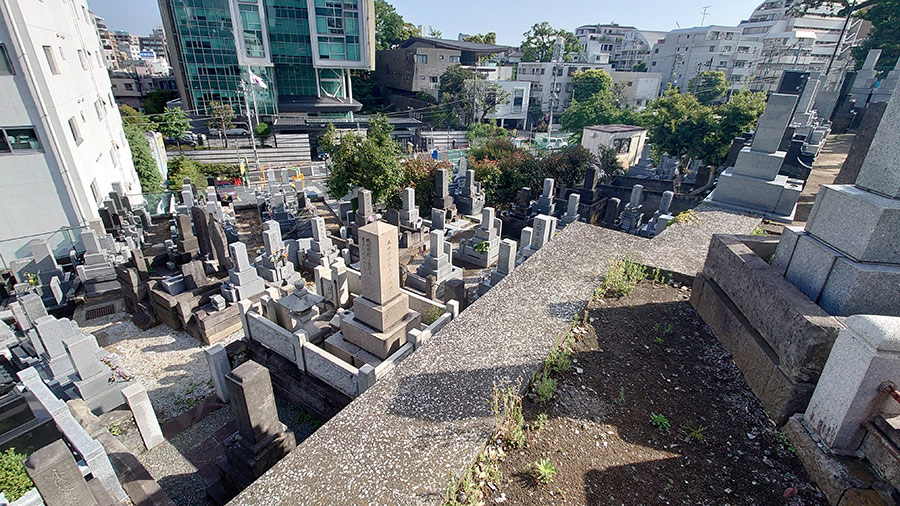
We have seen a lot of gray, green and brown colors. Let’s find something more colorful! If we walk a little bit behind the main hall of the temple, there is a long part of the cemetery wall that was painted by kindergarteners, presumably the kids who attend the kindergarten that’s adjacent to the temple.
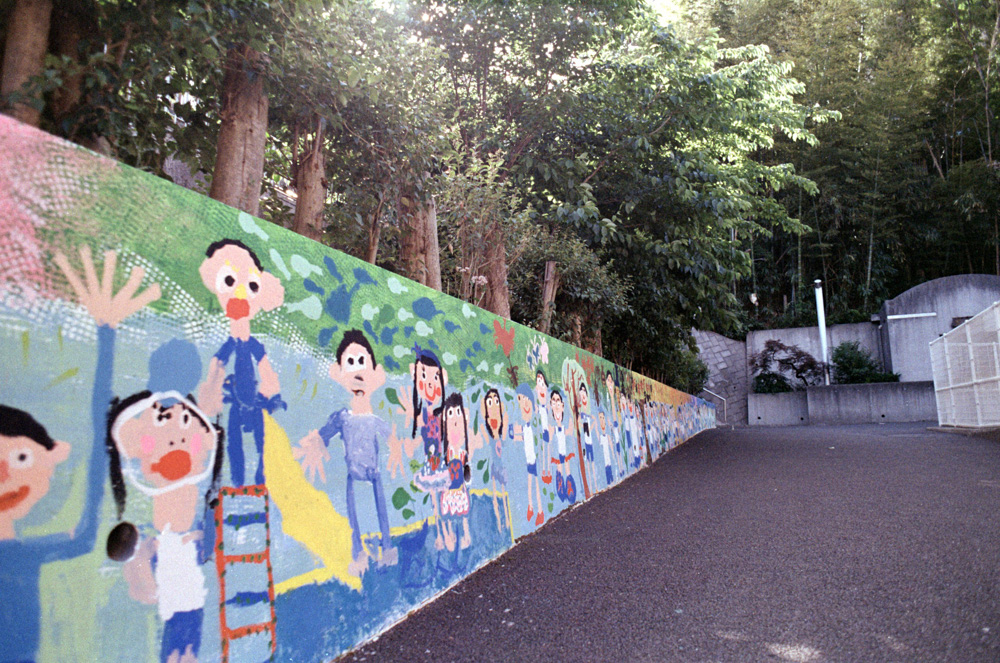
Now let’s turn around and go back to look at one more thing.
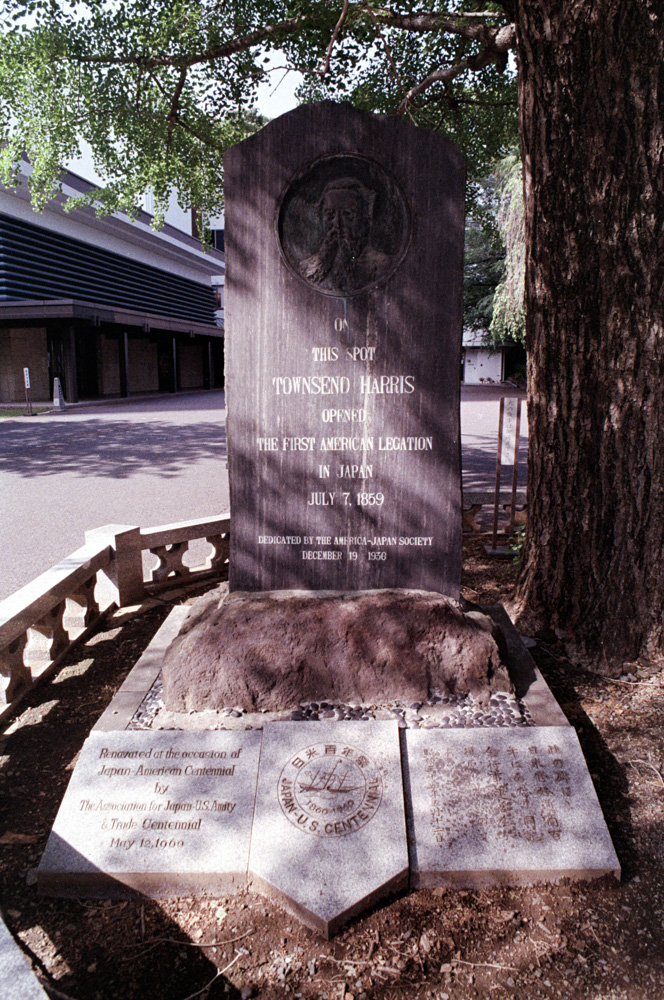
Near the middle of the precincts, there is a monument commemorating the spot where Townsend Harris, the first US Consul General in Japan, set up the first American consulate in 1859. It is probably not a coincidence that this area of Tokyo now has many embassies from all over the world.
Before we finish for today, here is the bonus you’ve all been waiting for.
Ginkgo trees are known for their resilience and longevity — they can live thousands of years. They are also a very common sight along Tokyo streets and avenues. As such, it’s only appropriate that Tokyo, the city that survived so many natural and man-made disasters throughout history yet quickly recovered every time, has chosen the ginkgo leaf as its official symbol and logo.
From the Tokyo Metropolitan Government website: The symbol of the metropolis is made up of three arcs resembling a ginkgo leaf to represent the letter T for Tokyo. The metropolitan logo is normally rendered in a vivid green color to symbolize Tokyo’s future growth, charm and tranquility. The symbol was officially adopted on June 1, 1989.
